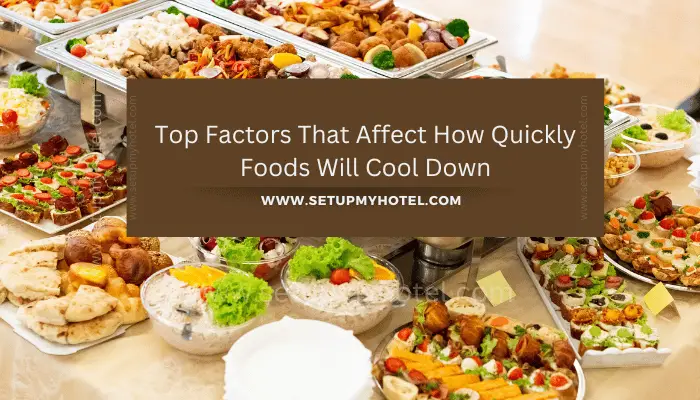Methods and Factors that help in cooling down foods quickly
Foods that are too hot can be dangerous to eat. To avoid any potential health risks, it is important to know how to cool foods down quickly. There are several factors that can affect how quickly foods will cool down. One of the most important factors is the size of the food item. Smaller pieces of food will cool down more quickly than larger ones. Another factor is the shape of the food item. FlatA flat silver plated or stainless steel tray used for service. or thin foods will cool down faster than foods that are thicker or have irregular shapes.
The temperature of the environment also plays a role in how quickly foods will cool down. In warmer environments, foods will take longer to cool down than in cooler environments. Additionally, the type of container that the food is stored in can affect its cooling rate. Foods stored in shallow containers will cool down more quickly than those stored in deeper containers.
Finally, how the food is handled after cooking can also affect its cooling rate. Foods that are left out at room temperature for too long will take longer to cool down. It is recommended to place hot foods in the refrigerator or freezer as soon as possible to promote quick cooling.
By understanding these factors, you can ensure that your food is cooled down safely and quickly, reducing the risk of foodborne illness.
- The Size of the food item being cooled.
- The thickness of the food or distance to its centre plays the biggest part in how fast a food cools.
- The density of the food – the denser the food, the slower it will cool. For example, chilli will take longer than chicken noodle soup.
- The container in which a food is stored – stainless steel transfers heat from foods faster than plastic. Initially loosely wrap food items.
- Size of the container – Shallow pans with product depth less than two inches allow the heat from food to disperse faster than deep pans.
- Food may not move through the temperature danger zone fast enough if the food is still hot when placed in the cooler or freezer or kept in bulk.
Methods for cooling foods faster:
- The hot food may also raise the temperature of the surrounding food items, placing them in the temperature danger zone (5º CelsiusCelsius - The thermometric scale on which 0� Celsius is the freezing point and 100� Celsius is t... – 57º Celsius).
- Listed below are a few methods that can be used to cook foods more quickly, These methods can be used alone or in combination.
- By reducing the quantity of the food being cooled.
- Cutting large food items into smaller pieces or divide large containers of food into smaller containers.
- By using a blast chiller or tumble chillers to cool food before placing it into refrigerated storage.
- By using an ice-water bath.
- Divide cooked food into shallow pans or smaller pots then place them in ice water and stir food items frequently.
- Add ice or water as an ingredient while preparing foods, This works for foods that contain water as an ingredient, such as a soup or stew.
- The recipe can initially be prepared with less water than is required.
- Cold water or ice can then be added after cooking to cool the product and to provide the remaining water required in the recipe.
- StirStir: Mixing ingredients gently; using a circular motion with a spoon or whisk to ensure even cookin... food to cool faster and more evenly. Ice paddles (plastic paddles that are filled with water and frozen) and chill sticks can be used to stir food through the cooling process.
- Stirring food with these cold paddles chills food quickly as this acts as internal ice baths.











